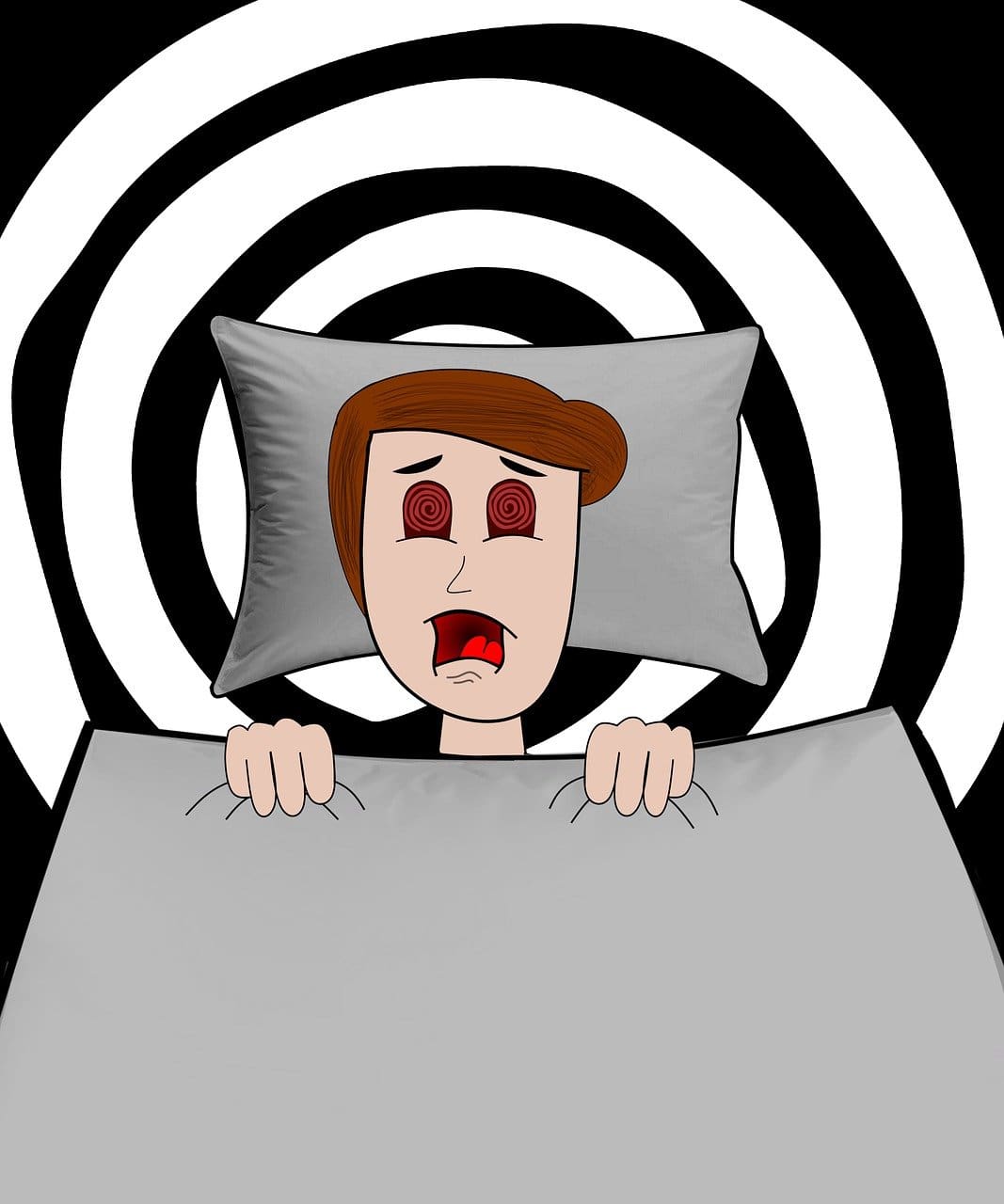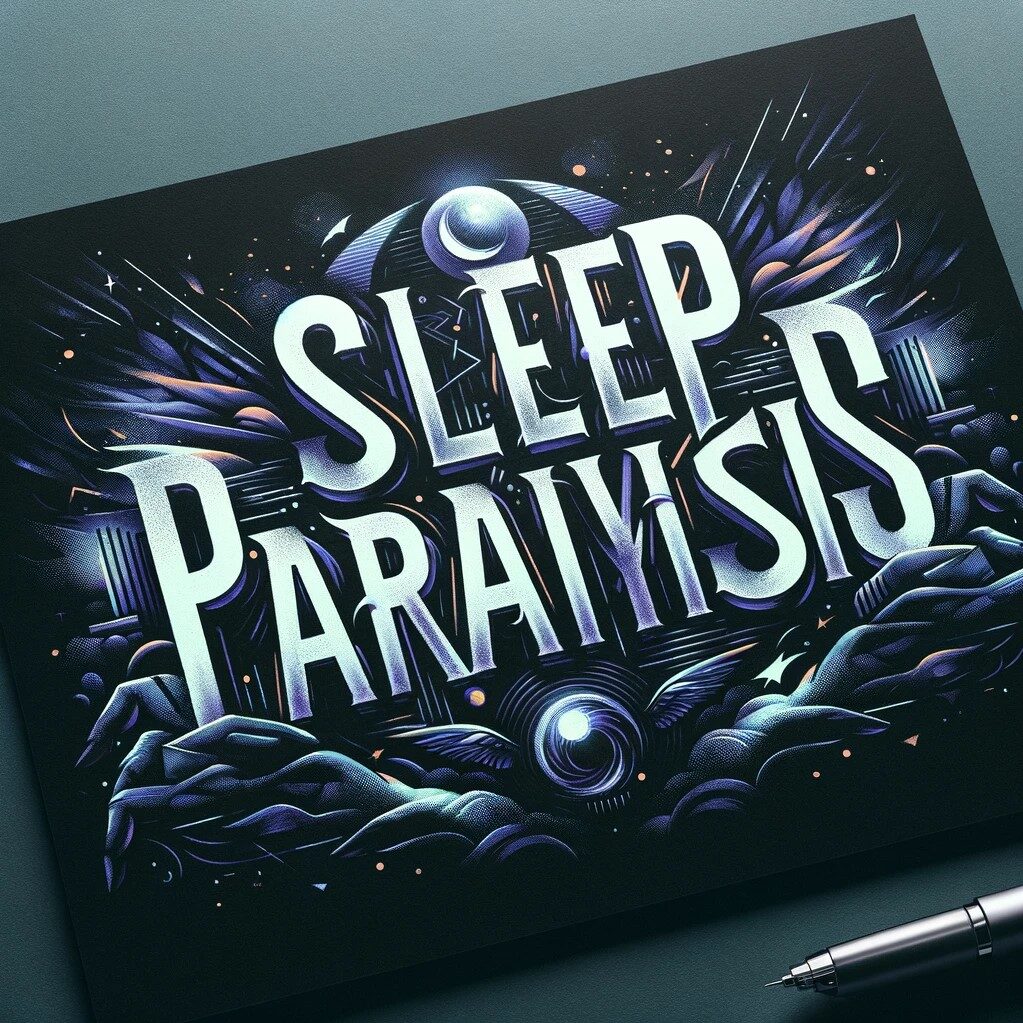Creating a solid bedtime routine can be a game-changer when it comes to preventing sleep paralysis, a terrifying sleep disorder that can leave you feeling helpless and afraid. By implementing a few simple practices into your nightly routine, you can potentially avoid the discomfort and fear associated with this unsettling phenomenon. In this article, you will discover practical tips and techniques to develop a soothing evening ritual that promotes a restful and uninterrupted sleep, ensuring that sleep paralysis remains a thing of the past. So let’s dive in and explore how you can take control of your nights and bid farewell to sleep paralysis once and for all.

Understanding Sleep Paralysis
Definition of sleep paralysis
Sleep paralysis is a temporary inability to move or speak that occurs during the transition between sleep and wakefulness. It typically lasts for a few seconds to a few minutes and can be a frightening experience. During sleep paralysis, your mind is awake, but your body is still in a state of sleep, leaving you unable to move or react.
Causes of sleep paralysis
Sleep paralysis can occur due to several factors, including disrupted sleep patterns, irregular sleep schedules, sleep deprivation, sleep disorders such as narcolepsy, and high levels of stress and anxiety. It is often associated with other sleep-related phenomena, such as vivid dreams and hallucinations.
Symptoms of sleep paralysis
The main symptom of sleep paralysis is the temporary inability to move or speak. However, individuals may also experience hallucinations, feelings of pressure on the chest, a sense of impending doom, and difficulty breathing during episodes of sleep paralysis. These symptoms can be terrifying and can lead to anxiety and fear surrounding sleep.
Importance of a Bedtime Routine
Establishing regular sleep patterns
Having a consistent bedtime routine is crucial for establishing regular sleep patterns. Going to bed and waking up at the same time each day helps regulate your body’s internal clock, making it easier to fall asleep and wake up naturally. By following a bedtime routine, you can train your body to recognize cues that it is time to sleep, promoting better overall sleep quality.
Reducing stress and anxiety
A bedtime routine can also be an excellent way to unwind and reduce stress and anxiety before sleep. Engaging in relaxation activities, such as reading, taking a warm bath, or practicing mindfulness or meditation, can help calm the mind and relax the body. This can lead to a more relaxed state before bed, making it easier to fall asleep and reducing the risk of experiencing sleep paralysis.
Improving overall sleep quality
A well-designed bedtime routine can significantly improve the overall quality of your sleep. By creating a calming sleep environment, avoiding stimulants before bed, and implementing relaxation techniques, you can help your body and mind prepare for restful sleep. This, in turn, can reduce the likelihood of experiencing sleep paralysis and promote better sleep health overall.
Designing Your Bedtime Routine
Setting a consistent sleep schedule
One of the key elements of a successful bedtime routine is setting a consistent sleep schedule. This means going to bed and waking up at the same time each day, even on weekends. By establishing a regular sleep schedule, you are training your body to recognize when it is time to sleep, making it easier to fall asleep and wake up refreshed.
Creating a calming sleep environment
Your sleep environment plays a crucial role in the quality of your sleep. To create a calming sleep environment, make sure your bedroom is dark, cool, and quiet. Use blackout curtains or an eye mask to block out any light, and consider using earplugs or a white noise machine to drown out any noise. Additionally, invest in a comfortable mattress, pillows, and bedding to ensure optimal comfort.
Avoiding stimulants before bed
Stimulants such as caffeine, nicotine, and alcohol can interfere with your ability to fall asleep and stay asleep. It is best to avoid consuming these substances several hours before bedtime. Instead, opt for a soothing herbal tea or warm milk, which can promote relaxation and help prepare your body for sleep.
Implementing relaxation techniques
Incorporating relaxation techniques into your bedtime routine can be incredibly beneficial for promoting restful sleep and reducing the likelihood of sleep paralysis. Techniques such as deep breathing, progressive muscle relaxation, guided imagery, and meditation can help calm the mind and relax the body. Experiment with different techniques to find what works best for you.
Creating a Nightly Wind-Down Routine
Establishing a pre-bedtime routine
A pre-bedtime routine is a set of activities that you engage in every night before going to sleep. This routine signals to your body and mind that it is time to wind down and prepares them for sleep. Consider engaging in activities such as reading a book, journaling, listening to calming music, or practicing gentle stretching or yoga.
Engaging in relaxation activities
Incorporating relaxation activities into your nightly wind-down routine can help promote relaxation and prepare your body for sleep. These activities can include taking a warm bath or shower, practicing deep breathing exercises, using aromatherapy oils, or doing a few minutes of light stretching or gentle yoga. Find activities that help you unwind and incorporate them into your routine.
Limiting screen time before bed
The blue light emitted by electronic devices such as smartphones, tablets, and computers can suppress the production of melatonin, a hormone that regulates sleep. Avoiding screen time at least an hour before bed can help regulate your sleep-wake cycle and improve the quality of your sleep. Instead, choose activities that do not involve screens, such as reading a book or listening to calming music.
Avoiding heavy meals before sleep
Eating a large, heavy meal close to bedtime can disrupt your sleep and increase the risk of experiencing sleep paralysis. It is best to avoid eating heavy meals at least two to three hours before bed. If you are hungry before sleep, opt for a light snack that contains carbohydrates and protein, such as a small bowl of oatmeal or a piece of toast with nut butter.

Promoting Restful Sleep
Establishing a soothing bedtime ritual
A soothing bedtime ritual can help signal to your body and mind that it is time to sleep. This can include activities such as dimming the lights, listening to relaxing music, practicing deep breathing exercises, or engaging in a quiet activity such as reading or journaling. By creating a consistent bedtime ritual, you are providing cues to your body that it is time to relax and prepare for sleep.
Using sleep-inducing aromatherapy
Certain scents have been proven to promote relaxation and improve the quality of sleep. Incorporating sleep-inducing aromatherapy into your bedtime routine can be an effective way to promote restful sleep and reduce the likelihood of sleep paralysis. Lavender, chamomile, and bergamot are among the scents that are known to have calming effects. Consider using essential oils, pillow sprays, or scented candles to create a soothing sleep environment.
Trying natural sleep supplements
If you are struggling with sleep, you may consider trying natural sleep supplements to promote restful sleep. Melatonin, magnesium, valerian root, and chamomile are some of the supplements that have been used to aid sleep. However, it is essential to consult with your healthcare professional before trying any supplements to ensure they are safe and appropriate for you.
Practicing breathing exercises
Deep breathing exercises can help calm the mind and relax the body, making it easier to fall asleep and reducing the risk of sleep paralysis. One simple and effective breathing exercise is the 4-7-8 technique. Inhale through your nose for a count of 4, hold your breath for a count of 7, and exhale through your mouth for a count of 8. Repeat this cycle several times before bed to promote relaxation and prepare for sleep.
Maintaining a Healthy Lifestyle
Exercising regularly
Regular exercise not only promotes physical health but also improves sleep quality. Engaging in aerobic exercises, such as walking, jogging, or swimming, can help regulate your sleep-wake cycle and reduce the likelihood of sleep disturbances, including sleep paralysis. Aim for at least 30 minutes of moderate-intensity exercise most days of the week for optimal sleep benefits.
Eating a balanced diet
A balanced diet that includes a variety of whole foods, fruits, vegetables, lean proteins, and healthy fats can positively impact your sleep quality. Avoiding heavy, greasy, and spicy meals close to bedtime can help prevent digestive issues that may disrupt your sleep. Additionally, staying hydrated throughout the day can prevent nighttime thirst and interruptions to your sleep.
Limiting caffeine intake
Caffeine is a stimulant that can interfere with sleep quality and increase the risk of sleep disturbances. It is best to limit caffeine intake, especially in the afternoon and evening hours. Be mindful of hidden sources of caffeine, such as chocolate, certain medications, and some teas. Opt for decaffeinated alternatives or herbal teas that promote relaxation and assist with sleep.
Managing stress levels
High levels of stress can significantly impact your sleep quality and increase the risk of experiencing sleep paralysis. Finding healthy ways to manage stress, such as practicing mindfulness, engaging in regular exercise, spending time in nature, or seeking support from loved ones or a therapist, can help reduce stress levels and promote restful sleep.

Addressing Underlying Sleep Disorders
Consulting a healthcare professional
If you frequently experience sleep paralysis or believe you may have an underlying sleep disorder, it is essential to consult with a healthcare professional. They can help diagnose any potential sleep disorders and provide appropriate guidance and treatment options.
Exploring treatment options
Based on the diagnosis, your healthcare professional may recommend various treatment options to address sleep disorders and reduce the likelihood of sleep paralysis. Treatment options may include cognitive-behavioral therapy for insomnia (CBT-I), medication, or lifestyle modifications to improve sleep habits.
Considering therapy or counseling
In some cases, sleep paralysis may be related to underlying psychological factors such as anxiety or trauma. Seeking therapy or counseling can help address these issues and provide tools and coping strategies to manage stress and anxiety, ultimately improving sleep quality.
Managing medications and conditions
Certain medications or medical conditions can contribute to sleep disturbances and increase the risk of sleep paralysis. It is crucial to discuss any medications or medical conditions with your healthcare professional to ensure they are not interfering with your sleep. Adjustments to medication or management of underlying conditions may be necessary to improve sleep health.
The Role of Sleep Environment
Creating a dark and quiet bedroom
The sleep environment plays a significant role in promoting restful sleep and reducing the risk of sleep paralysis. Ensure that your bedroom is dark and quiet by using blackout curtains, earplugs, or a white noise machine. Minimizing disruptions can help you fall asleep more easily and stay asleep throughout the night.
Ensuring comfortable bedding and pillows
Investing in comfortable bedding and pillows that support your body’s needs can greatly improve sleep quality. A mattress that is too hard or too soft can lead to discomfort and disrupted sleep. Similarly, pillows that do not adequately support your neck and head can result in neck pain or stiffness. Find bedding and pillows that suit your preferences and promote a restful sleep environment.
Regulating room temperature
Maintaining a comfortable room temperature is essential for optimal sleep. The ideal temperature for sleep is typically between 60-67 degrees Fahrenheit (15-20 degrees Celsius). Experiment with different temperatures to find what works best for you and consider using a fan, air conditioner, or heater to regulate the room temperature as needed.
Eliminating distractions
Distractions in the bedroom can disrupt sleep and increase the risk of sleep paralysis. Remove any electronics, such as televisions or smartphones, from the bedroom to minimize visual and auditory stimuli. Additionally, consider using blackout curtains or an eye mask to block out any sources of light that may interfere with sleep.
Seeking Emotional Support
Sharing experiences with loved ones
Sleep paralysis can be a distressing experience, and sharing your experiences with loved ones can help alleviate some of the anxiety and fear surrounding sleep. Talking to someone you trust about your experiences can provide emotional support and help you feel understood and less alone.
Joining support groups or online forums
Joining support groups or online forums dedicated to sleep paralysis or sleep disorders can be a valuable source of information and emotional support. Hearing from others who have experienced similar situations can help normalize your experiences and provide insights into coping strategies and treatment options.
Seeking professional therapy or counseling
If sleep paralysis or sleep disturbances significantly impact your quality of life or mental well-being, seeking professional therapy or counseling may be beneficial. A therapist or counselor can help you explore any underlying psychological factors contributing to sleep paralysis and provide guidance and coping strategies to manage stress and anxiety.
Implementing stress-relief techniques
Stress and anxiety can worsen sleep paralysis and interfere with sleep quality. Implementing stress-relief techniques into your daily routine can help reduce these negative impacts. Activities such as practicing mindfulness, engaging in regular exercise, or using relaxation techniques can promote relaxation and overall well-being.
Monitoring and Evaluating Your Routine
Tracking sleep patterns
Monitoring and tracking your sleep patterns can provide valuable insights into your routine’s effectiveness and help identify any areas that may need adjustment. Use a sleep diary or a smartphone application to track your sleep duration, quality, and any occurrences of sleep paralysis. This information can help you and your healthcare professional make informed decisions about modifications to your routine.
Noting any changes or improvements
As you implement a bedtime routine and make adjustments, pay close attention to any changes or improvements in your sleep quality and frequency of sleep paralysis episodes. By noting these changes, you can assess the effectiveness of your routine and make further adjustments if necessary.
Making adjustments as necessary
A bedtime routine is not a one-size-fits-all solution, and what works for one person may not work for another. It is essential to be open to making adjustments and modifications to your routine based on your individual needs and preferences. This can include trying different relaxation techniques, experimenting with different sleep environments, or incorporating new strategies for managing stress.
Seeking professional guidance if needed
If you are struggling to create an effective bedtime routine or experiencing persistent sleep paralysis despite your efforts, it may be beneficial to seek professional guidance from a sleep specialist or healthcare professional. They can provide personalized recommendations and guidance based on your unique situation and help you find effective strategies to prevent sleep paralysis and improve overall sleep quality.
